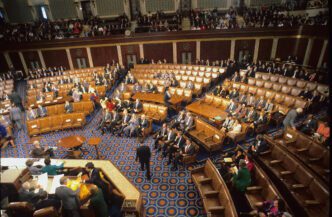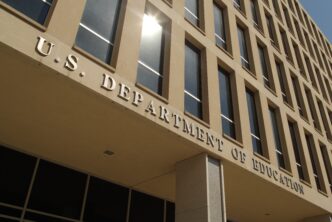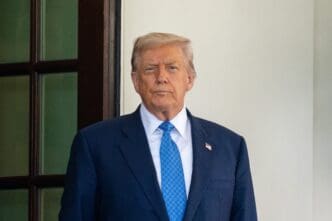Executive Summary
The Story So Far
Why This Matters
Who Thinks What?
A wave of panic and confusion has swept through Indian communities and the global tech industry following US President Donald Trump’s order imposing a $100,000 fee for new H-1B visa applications. The move, announced Friday, disproportionately affects skilled professionals from India, who are the largest group of beneficiaries of the program, and is justified by Washington as a measure to curb “systemic abuse” and encourage American hiring.
Immediate Fallout and Confusion
The announcement triggered widespread confusion, notably aboard an Emirates flight from San Francisco to Dubai, which was delayed for three hours. H-1B visa holders on board scrambled to ascertain if they would be able to re-enter the United States. A video verified by CNN showed the captain attempting to reassure passengers, acknowledging that some chose not to travel.
Masud Rana, a passenger who filmed the incident, described the situation as “complete chaos,” noting the panic among many Indian passengers who ultimately disembarked.
Understanding the H-1B Visa Program
The H-1B visa is a non-immigrant work visa valid for three years, with the option for a three-year renewal. While Washington argues the new fee is necessary to address program abuse, economists have historically contended that the H-1B program enables US companies to maintain global competitiveness, grow their businesses, and ultimately create more jobs domestically.
Disproportionate Impact on Indian Professionals
The new fee is set to have a significant impact on skilled professionals from India, who have consistently accounted for the majority of approved H-1B applications. This threatens to disrupt the career paths of hundreds of thousands of individuals and reshape the business models of tech firms reliant on global talent. India’s Ministry of External Affairs issued a statement expressing hope that the “disruptions can be addressed suitably by the US authorities,” citing potential “humanitarian consequences.” The White House later clarified that the $100,000 fee applies solely to new H-1B applications.
H-1B’s Role in American Innovation
For decades, the H-1B visa has been a critical pathway for some of India’s brightest minds to enter the US workforce, serving as a launchpad for long-term careers and deep integration into American innovation. This trend is evident in the leadership of major tech companies, with figures like Microsoft’s Satya Nadella, Alphabet’s Sundar Pichai, IBM’s Arvind Krishna, and Adobe’s Shantanu Narayen — all Indian-born — having earned degrees from American universities.
Industry Reactions and Financial Implications
India’s National Association of Software and Service Companies (NASSCOM) warned that the order “can potentially have ripple effects on America’s innovation ecosystem and the wider job economy.” Data from US Citizenship and Immigration Services for the 2025 fiscal year shows Amazon as the leading H-1B beneficiary with approximately 10,000 visas, followed by Indian tech giant Tata Consultancy Services (TCS) with over 5,500 approved petitions.
Under the new $100,000 visa fee, these numbers would translate to a potential cost of $1 billion for Amazon and $550 million for TCS for a single year’s applicants. Analysts at Nomura predict that IT service providers are unlikely to absorb these costs, forecasting an acceleration towards increased offshoring and automation, alongside a rise in hiring in “near-shore” locations like Mexico and Canada. The costly H-1B visa, Nomura suggests, would likely be reserved for “extremely critical roles” where local talent is unavailable.
Broader Economic Tensions and Potential Upsides
The visa fee marks a new escalation in the Trump administration’s economic pressure on India, following recent 50% tariffs on Indian goods imposed last month, justified by Washington as a punitive measure for India’s importation of Russian oil. Madhavi Arora, chief economist at Emkay Global Financial Services, noted that “service exports have finally been dragged into the ongoing global trade and tech war.”
However, Arora also suggested a potential upside for India, arguing that the policy could catalyze the return of talent and transform India into a more powerful global innovation and delivery hub. Mumbai resident Ashok Gupta echoed this sentiment, stating, “It is a loss for America not India. Those people who go abroad and can’t pay that much money, they will open their offices here. When they will work here, India, which is already on the way of progress, will progress more.”
Looking Ahead
The new H-1B visa fee introduces significant uncertainty for Indian skilled workers and the US tech sector, prompting strategic reevaluations by companies and potentially reshaping global talent flows. While the measure aims to address perceived program abuses and boost domestic hiring, its long-term economic and humanitarian consequences remain a subject of debate, with some predicting a boon for India’s domestic tech landscape.








